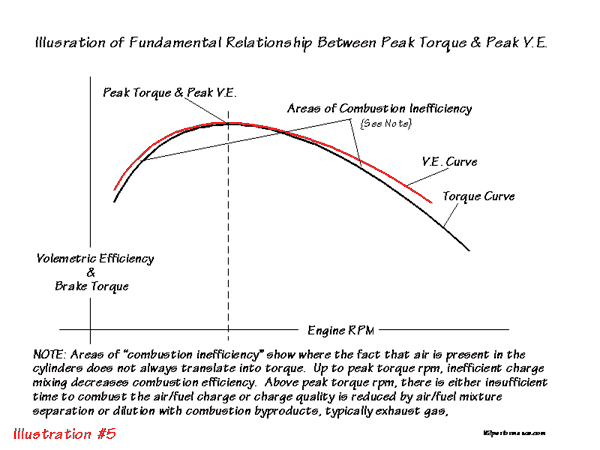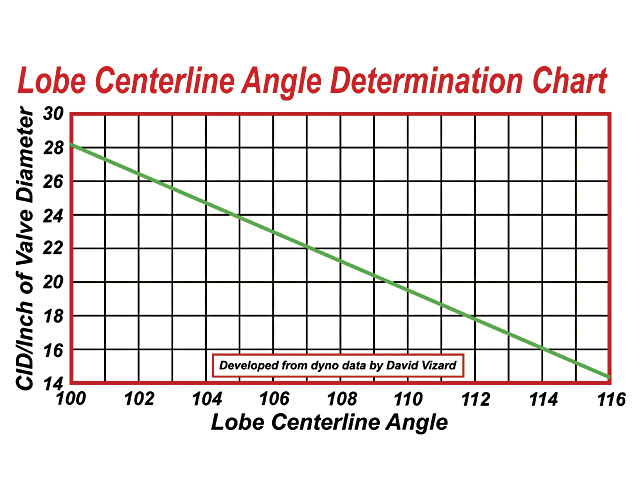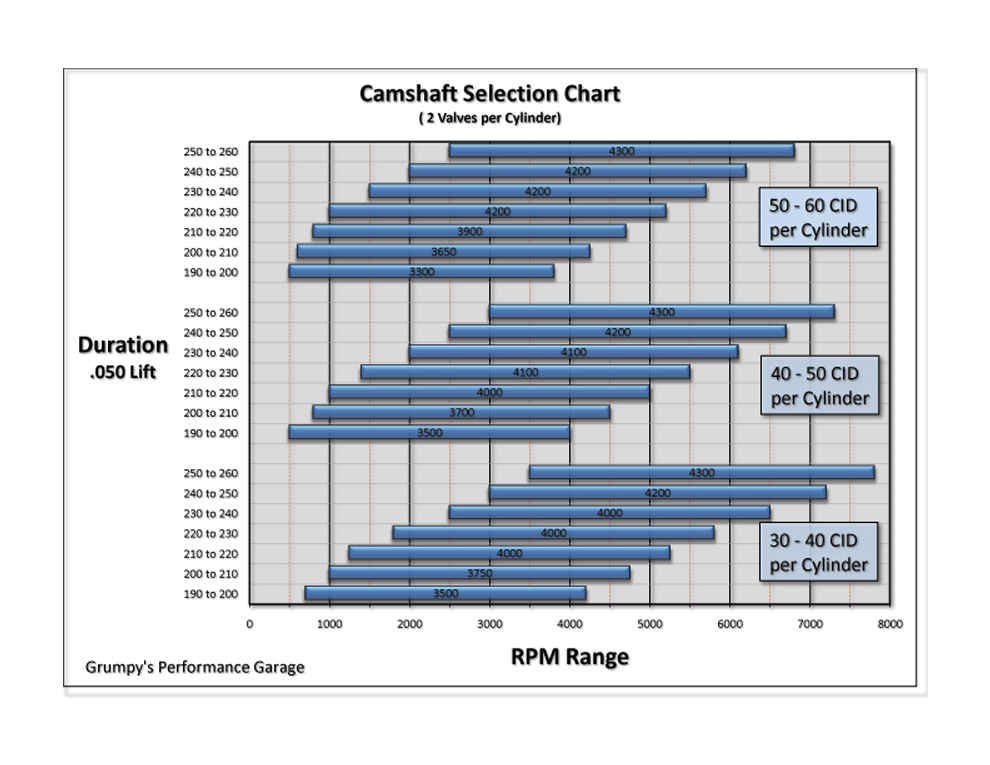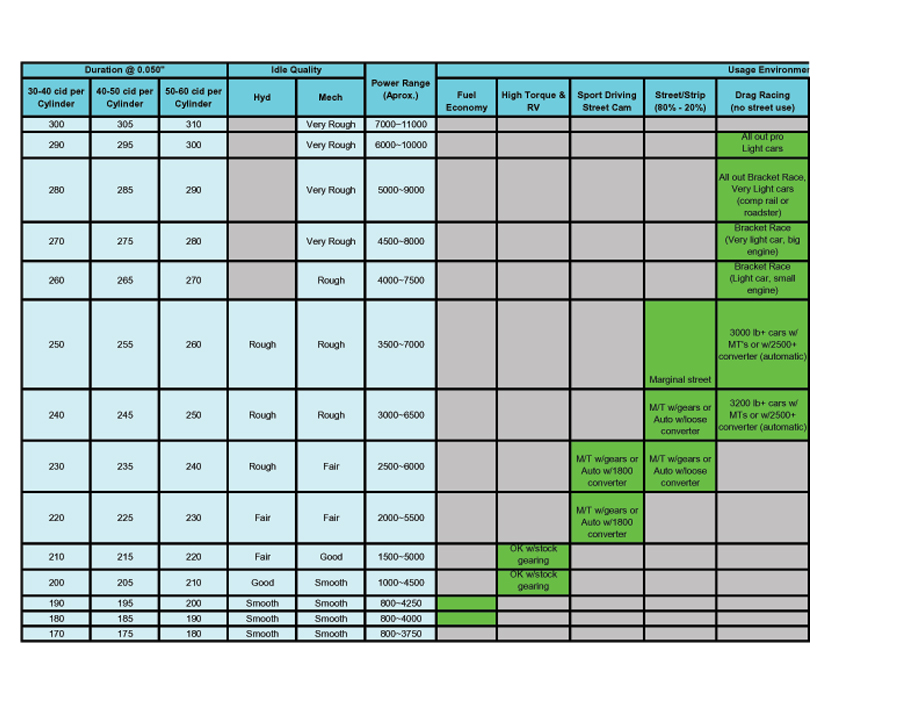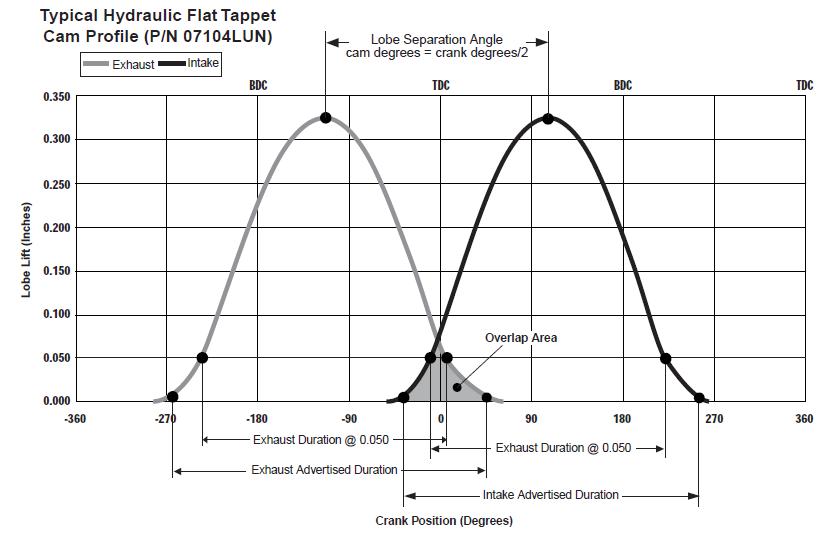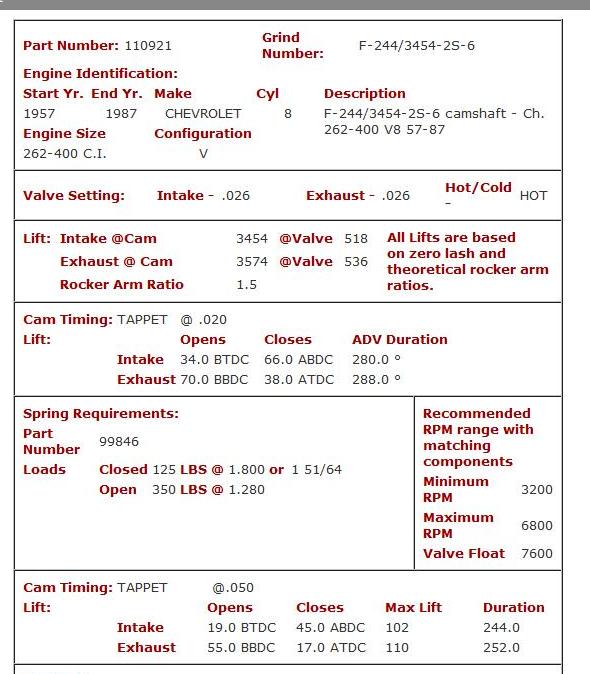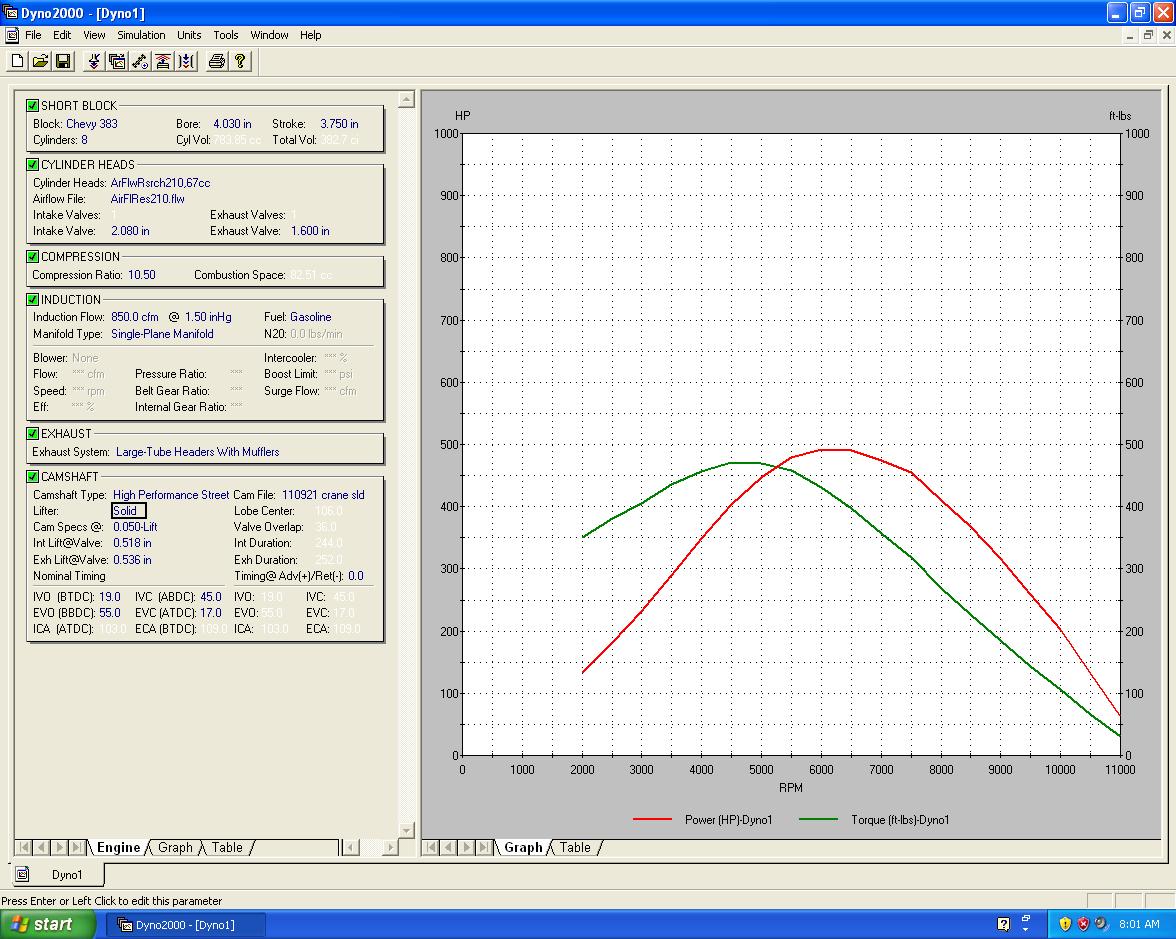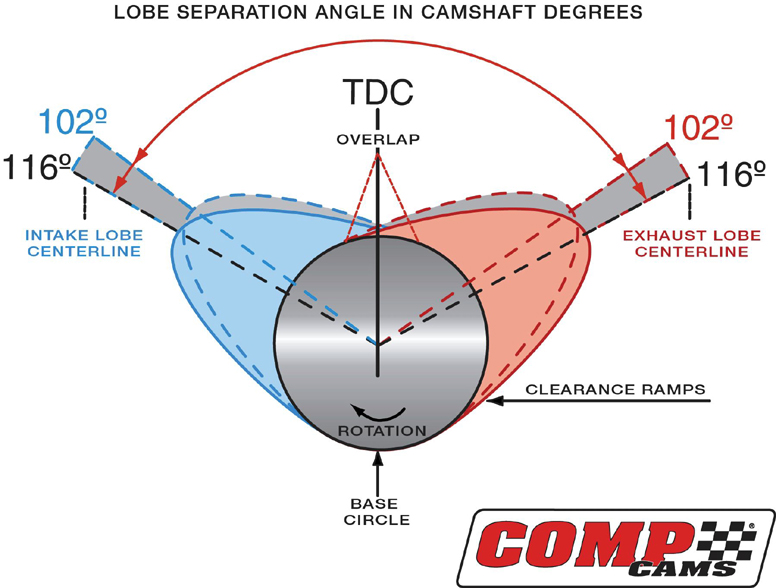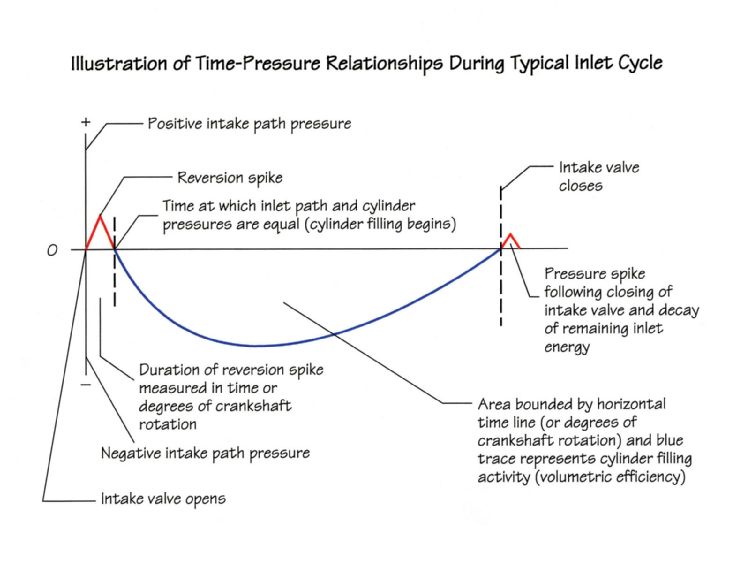thats the problem with some of these discussions,
the TERMS USED mean different things to different people, in different discussions
LSA=LOBE SEPARATION ANGLE
LCA =LOBE CENTER-LINE ANGLE
that and the fact that they can both be the same thing ,(IF the cams installed strait up,) as opposed to having the cam installed either advanced or retarded , where they will NOT BE!
LOBE SEPARATION ANGLE, IS GROUND INTO THE CAM CORE WHEN ITS MANUFACTURED, YOU can INDEX THE CAM ADVANCING AND RETARDING ITS LOCATION IN RELATION TO THE PISTON IN ITS STROKE, IN THE BORE BUT THE LOBE SEPARATION ANGLE REMAINS CONSTANT,
EXAMPLE
if YOU ADVANCE THE INTAKE LOBE 4 DEGREES YOU'VE ALSO ADVANCED THE EXHAUST LOBE 4 DEGREES.
ADVANCING THE CAM 4 DEGREES TENDS TO LOWER THE WHOLE TQ CURVE ABOUT 170-200RPM, RETARDING the CAM 4 DEGREES TENDS TO RAISE THE WHOLE TQ CURVE ABOUT 170-200RPM.
IF YOU NEED MORE THAN THAT MUCH ADJUSTMENT YOU PROBABLY NEED A DIFFERENT CAM
your LCA or LOBE CENTER ANGLE will change with any changes in indexing, degreeing in the cam,or moving the cam rotation with the cranks rotation .
Above 114 Deg. = Extremely Wide
114-112 Deg. = Wide
112-110 Deg. = Moderately Wide
110-108 Deg. = Moderate
108-106 Deg. = Moderately Tight
106-104 Deg. = Tight
Below 104 Deg. = Extremely Tight
VARYING LOBE SEPARATION ANGLE (CONSTANT)Tighten.................................................Widen
Moves Torque to Lower RPM.................Raise Torque to Higher RPM
Increases Maximum Torque..................Reduces Maximum Torque
Narrow Power Band..............................Broadens Power Band
Builds Higher Cylinder Pressure............Reduce Maximum Cylinder Pressure
Increase Chance of Engine Knock.........Decrease Chance of Engine Knock.
Increase Cranking Compression...........Decrease Cranking Compression
Increase Effective Compression............Decrease Effective Compression
Idle Vacuum is Reduced........................Idle Vacuum is Increased
Idle Quality Suffers...............................Idle Quality Improves
Open Valve-Overlap Increases.............Open Valve-Overlap Decreases
Closed Valve-Overlap Increases...........Closed Valve-Overlap Decreases
Natural EGR Effect Increases................Natural EGR Effect is Reduced
Decreases Piston-to-Valve Clearance...Increases Piston-to-Valve Clearance
ADVANCING / RETARDING CAM TIMING (LCA)will change with any changes in indexing
ADVANCING...............................................RETARDING
Begins Intake Event Sooner........................Delays Intake Event Closes Intake
Open Intake Valve Sooner..........................Keeps Intake Valve Open Later
Builds More Low-End Torque.......................Builds More High-End Power
Decrease Piston-Intake Valve Clearance....Increase Piston-Intake Valve Clearance
Increase Piston-Exhaust Valve Clearance...Decrease Piston-Exhaust Valve Clearance
http://www.hotrod.com/techarticles/engi ... index.html
viewtopic.php?f=52&t=480
http://www.stockcarracing.com/techartic ... index.html
http://www.hotrod.com/techarticles/engi ... index.html
http://www.chevyhiperformance.com/techa ... index.html
http://www.popularhotrodding.com/tech/1 ... index.html
http://cochise.uia.net/pkelley2/Overlap.html
viewtopic.php?f=52&t=480&p=1666#p1666
